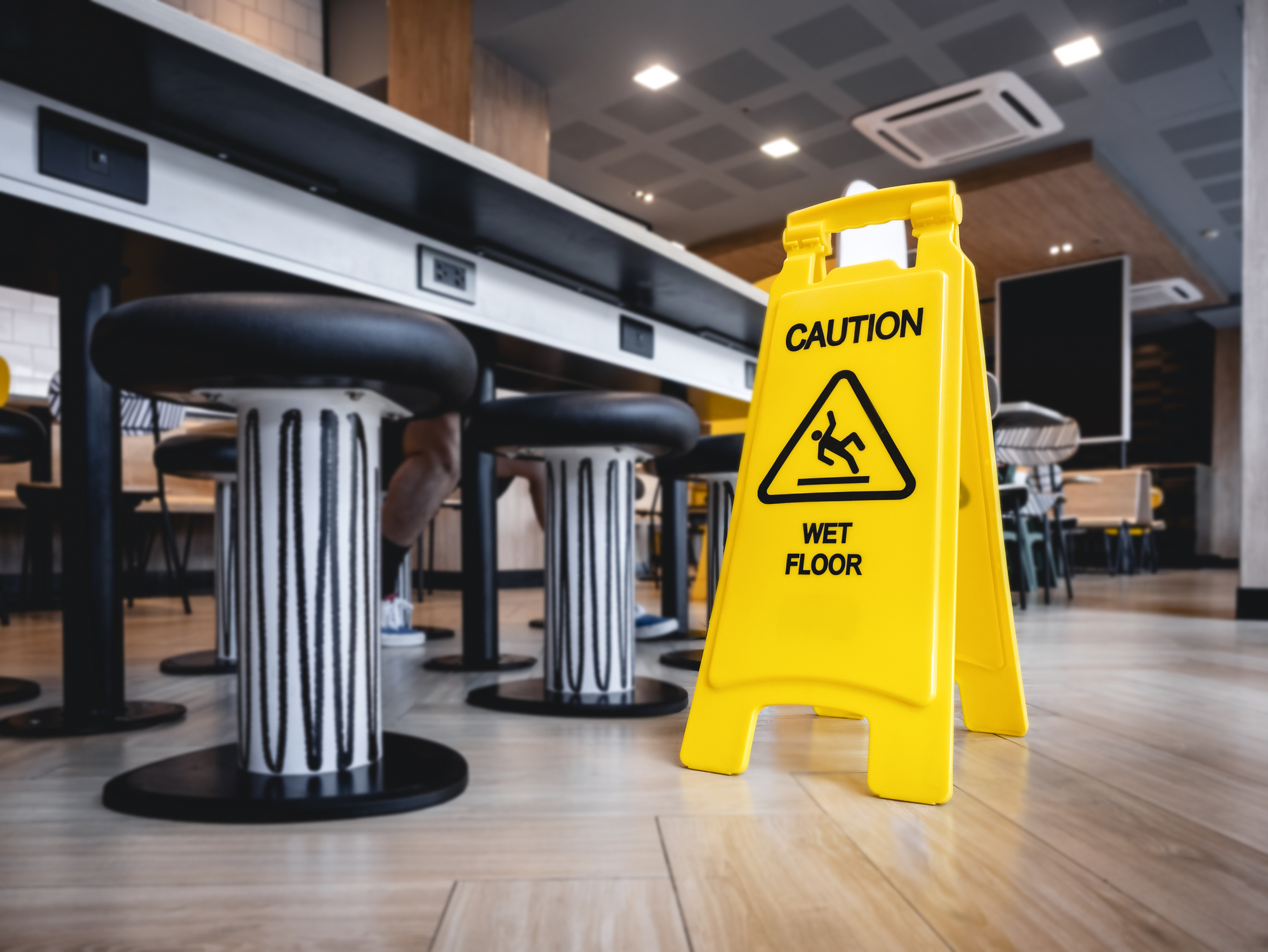Slip and Fall Management: Do You Have Their Attention?
Slip and fall injuries are a leading loss for workers’ compensation, costing over $11 billion annually. When evaluating prevention methods in your risk program, are you holding all department leadership accountable?
August 27, 2021

There may be plenty of advice on the prevention of slip and fall injuries in retail operations, but there are two additional key areas that are often missing – management communication and accountability. Sharing information and holding department managers accountable can reap numerous benefits for your organization.
For some, this may reinforce what you are already doing. For others, this may introduce a different approach to addressing slip and fall issues and the importance of having department managers take the lead. Regardless of where you are in the process, educating and holding managers accountable for results is critical to the success of your program. There are millions of slip and fall losses each year, and the costs are in the billions, with slips and falls being a leading loss for workers’ compensation and general liability lines of business for retail operations.
“A risk manager should understand how slip and fall losses trend within the organization then follow that information with action plans to address them,” said Don Enke, Vice President – Risk Services at Safety National. “In most organizations, this is where the information stops or bottlenecks occur. Some of the more-effective programs push trending information beyond the corporate office and share it with all levels of management, especially the front lines.”
In evaluating your own program, how would you answer the following questions?
- Are your department managers aware of the insurance costs associated with the operations of your organization?
- Are the types of losses, namely slip and falls, shared from a frequency and cost perspective? What about other losses?
- Are reports shared frequently so that all levels of the operation can see how losses are trending, better or worse?
- To understand the sales-to-cost comparison, can managers translate how many items need to be sold to make up the organization’s workers’ compensation and general liability costs? How about the department?
Accountability Produces Results
Once department managers are educated about trends within your organization and department, it is time for them to have “skin in the game” by being accountable for the results directly in their control. This should result in the following:
- Getting their attention. If they know they’re being held accountable for results and being measured on safety performance, then it is likely that they will take a more proactive approach to risk management.
- Promoting better loss control efforts. Managers tend to get more directly involved in managing loss control programs when they know that there is attention from all fronts. They will be more active and follow through on what they know and can control. They will also seek more help, guidance and look for other ideas to assist them.
Holding managers accountable for safety performance can take on a few different approaches, as outlined below.
- Performance Review – Include safety metric outcomes as part of the performance review process. Give managers clear goals for safety performance and results. We do this for sales and quality, so why not safety? As part of the goals, avoid using just frequency and cost measures. It is important to also include activity-based items that promote loss control activities. The risk manager/safety department should identify activities that will assist department managers in managing their program, including:
- Completing and maintaining logs of floor inspection and submit them to the risk management department regularly.
- Completing a self-inspection checklist addressing all floor conditions frequently.
- Providing periodic training and reminders to employees about slip and fall management and prevention. This should include educating employees on loss trends within their department and asking for suggestions for improvement. Employees like to be asked and involved and can offer some of the best ideas.
- Cost Allocation System – This process rewards both risk managers and individual departments for doing well. There needs to be a direct correlation between departmental losses and the risk management costs allocated to their units. Consider using risk bearing (costs directly related to their department) and risk sharing (insurance premiums and cost of risk costs are spread out among all departments) as measurements. Again, when it comes to allocating costs, it is most beneficial to allocate those clearly incurred by the department and solely in the department’s control.
Incorporating both of these ideas into your risk management program will help reap many benefits for your organization.

























